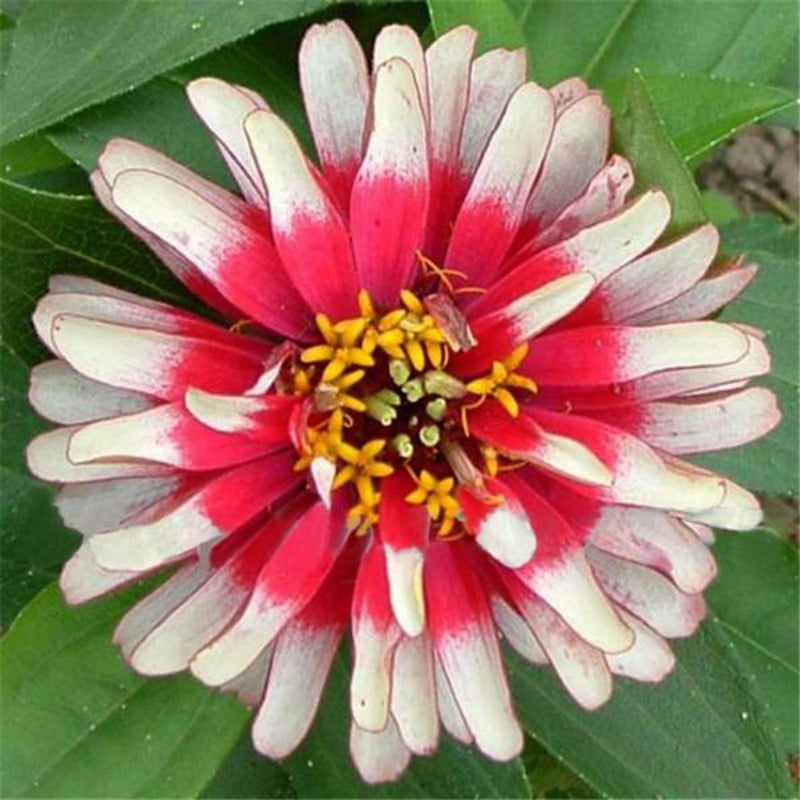- Species and varieties: Zinnia elegans, commonly known as Zinnia, is a popular garden flower. The white and red small zinnia flower seeds typically belong to the Zinnia elegans species, which comes in various varieties such as 'Lilliput', 'Thumbelina', and 'Dreamland'. These varieties are known for their compact size and vibrant colors.
- Hybrid or heirloom: Zinnia seeds can be both hybrid and heirloom. Hybrid varieties are often bred for specific traits such as disease resistance and uniformity in color and size. Heirloom varieties are open-pollinated and have been passed down through generations, maintaining their original characteristics.
- Pruning and training: Zinnias benefit from deadheading, which is the removal of spent flowers to encourage continuous blooming. Pinching back the stems when the plants are young can promote bushier growth. No significant training is required for these compact varieties.
- Fertilization needs: Zinnias are not heavy feeders but benefit from a balanced, all-purpose fertilizer applied at planting time. A light application of fertilizer every 4-6 weeks during the growing season can enhance growth and flowering. Avoid over-fertilizing, as this can lead to excessive foliage growth at the expense of flowers.
- Hardiness zones: Zinnias are suitable for USDA hardiness zones 3-10. They thrive in warm climates and are frost-sensitive, making them ideal for summer planting in most regions.
- Climate requirements: Zinnias prefer full sun and well-drained soil. They require a warm climate with temperatures ranging from 70°F to 85°F (21°C to 29°C). They are drought-tolerant once established but perform best with regular watering.




